- Use GitHub for version control (GitLab not currently supported for self-serve)
- Have GitHub admin access to manage secrets or variables for your repo
- Already have a CI workflow for running unit tests (setup, test script available)
Overview
To surface meaningful and validated tests, Tusk needs to execute the tests it generates against your commit with your specific project’s dependencies. Most engineering teams already have existing CI pipelines for running their unit test suites, most commonly with GitHub Actions. Our self-serve flow allows you to provision a GitHub Actions runner as an ephemeral sandbox, enabling you to piggyback off of your existing workflow setup and granting you greater control over the configuration.Using Tusk via self-serve will accrue GitHub Actions minutes for your organization. GitHub provides a generous amount of free minutes but a single Tusk test generation run can cost $0.16-0.32 depending on which runner you use. More on GitHub Actions billing here.
Set-Up Instructions
1
Start the environment set-up
In the Unit Tests page, click Start setup under the synced repo that you would like to set up a test environment for.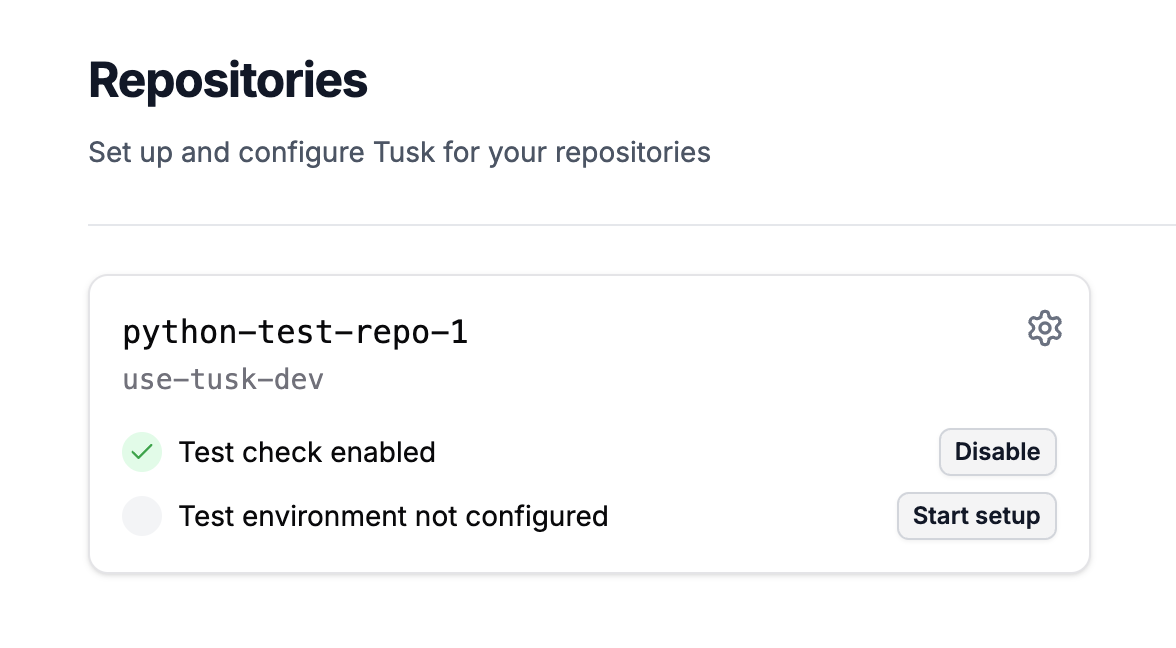
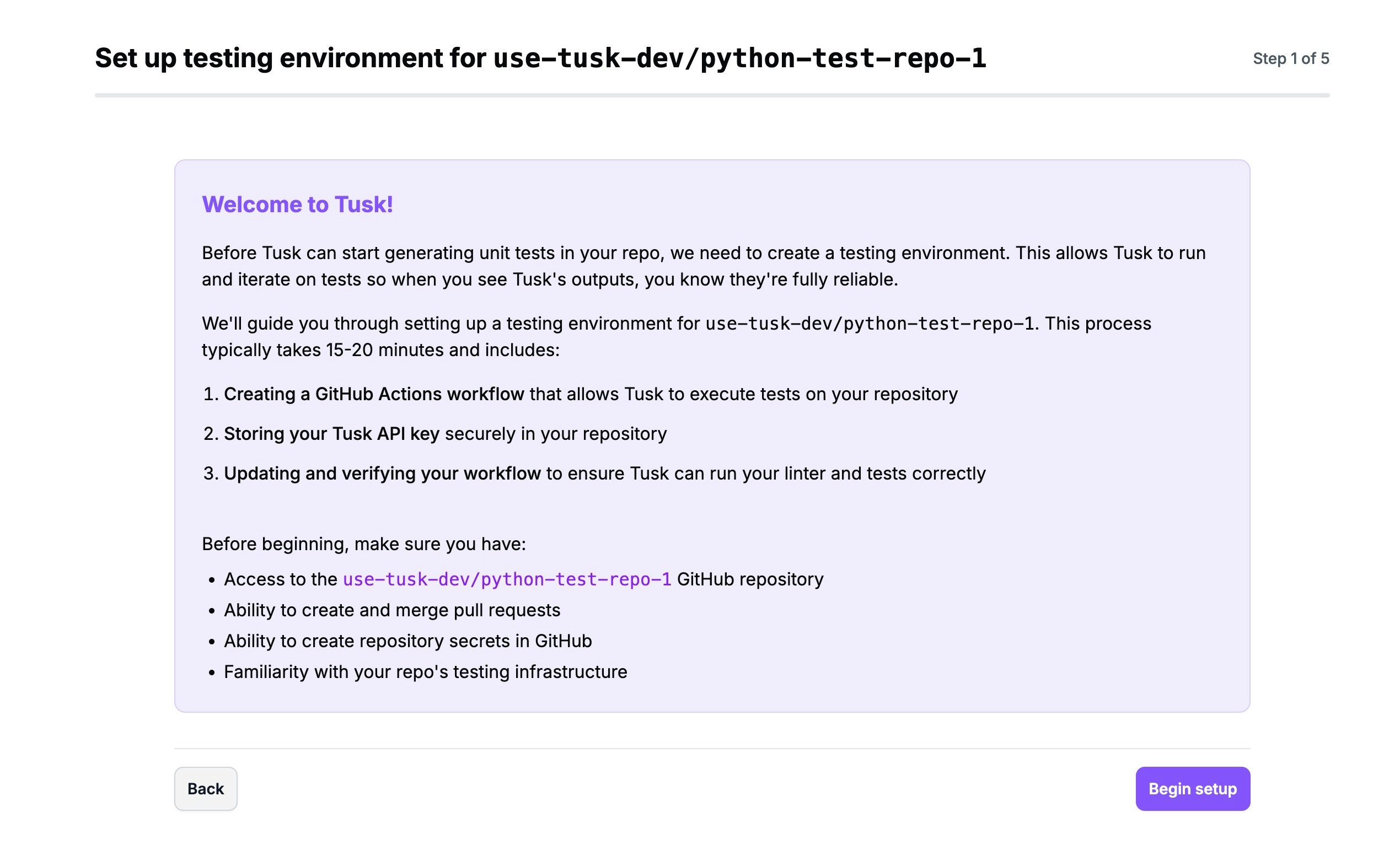


2
Configure your test environment
Start by selecting whether the repo you’re setting a test environment for is a monorepo or not. If it is a monorepo, include the application directory in the field that appears.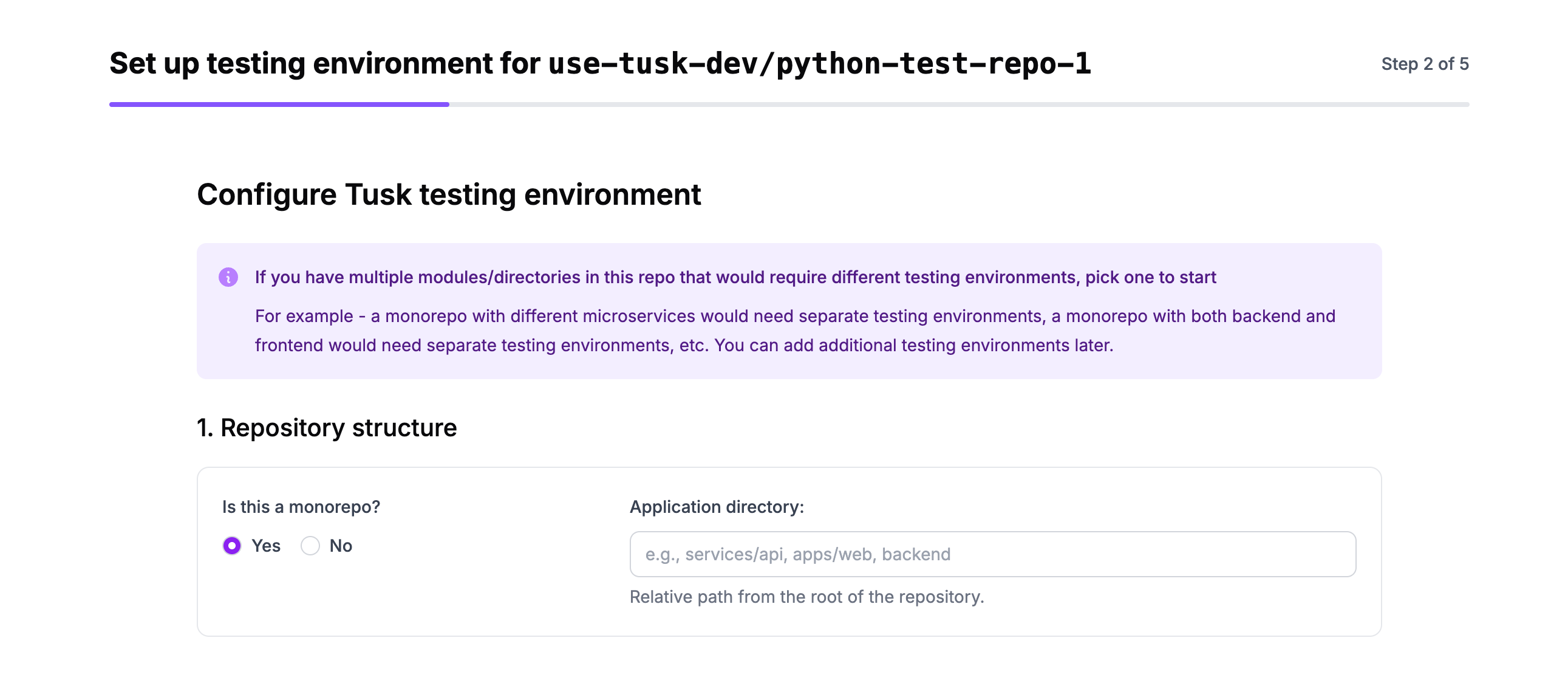





3
Create the Tusk GitHub workflow
Pick between using the Tusk template for the GitHub Actions workflow file (Option 1) or creating the workflow file manually (Option 2).We recommend going with Option 1 and clicking Create PR with template to use Tusk’s tailored workflow file.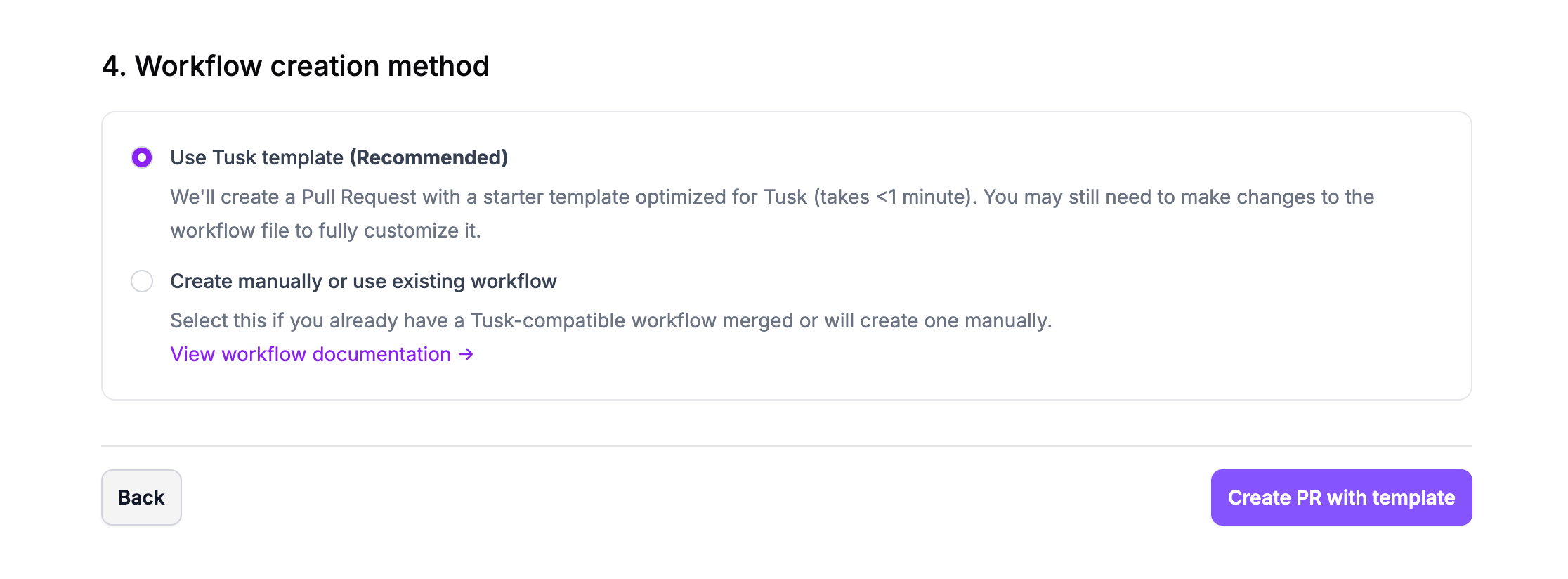

4
Modify the Tusk GitHub workflow file
If you chose Option 1, click the URL to view the PR for the Tusk GitHub workflow. The workflow file will be tailored to your repo according to your configurations in the earlier steps.Note: You may need to modify the workflow file to customize it to your project (e.g., setup steps, RegEx for matching test files). Refer to the comments in the workflow file itself as a guide for modifying the file. More details in this FAQ.

5
Create Tusk API key
In the Tusk set-up wizard, create an API key under the “Confirm Tusk API Key” section. Make sure to copy the API key on first creation and add it to your repo’s secrets.

6
Merge the Tusk GitHub workflow PR
Once you’ve reviewed and approved the Tusk GitHub workflow PR, merge the PR into your default branch.

7
Select the workflow file
In the Tusk set-up wizard, click Refetch under the “Select workflow” step. Then, select the Tusk GitHub workflow file you just merged. Click Continue.

8
Verify the Tusk GitHub workflow
Choose the branch to test the Tusk GitHub workflow on and then paste in file paths of existing test files in the repo. We recommend including at least 2 test files (use comma-separated values).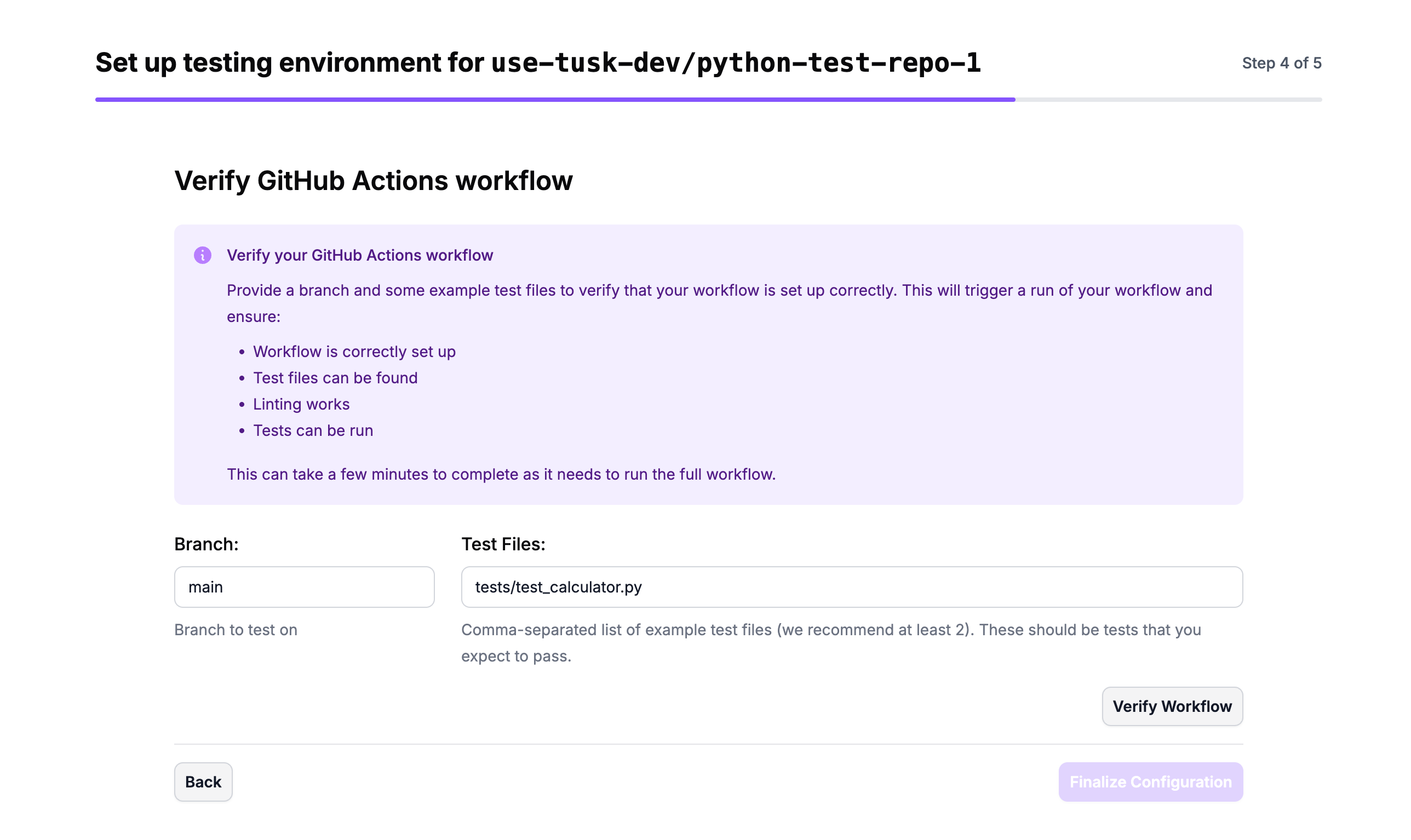
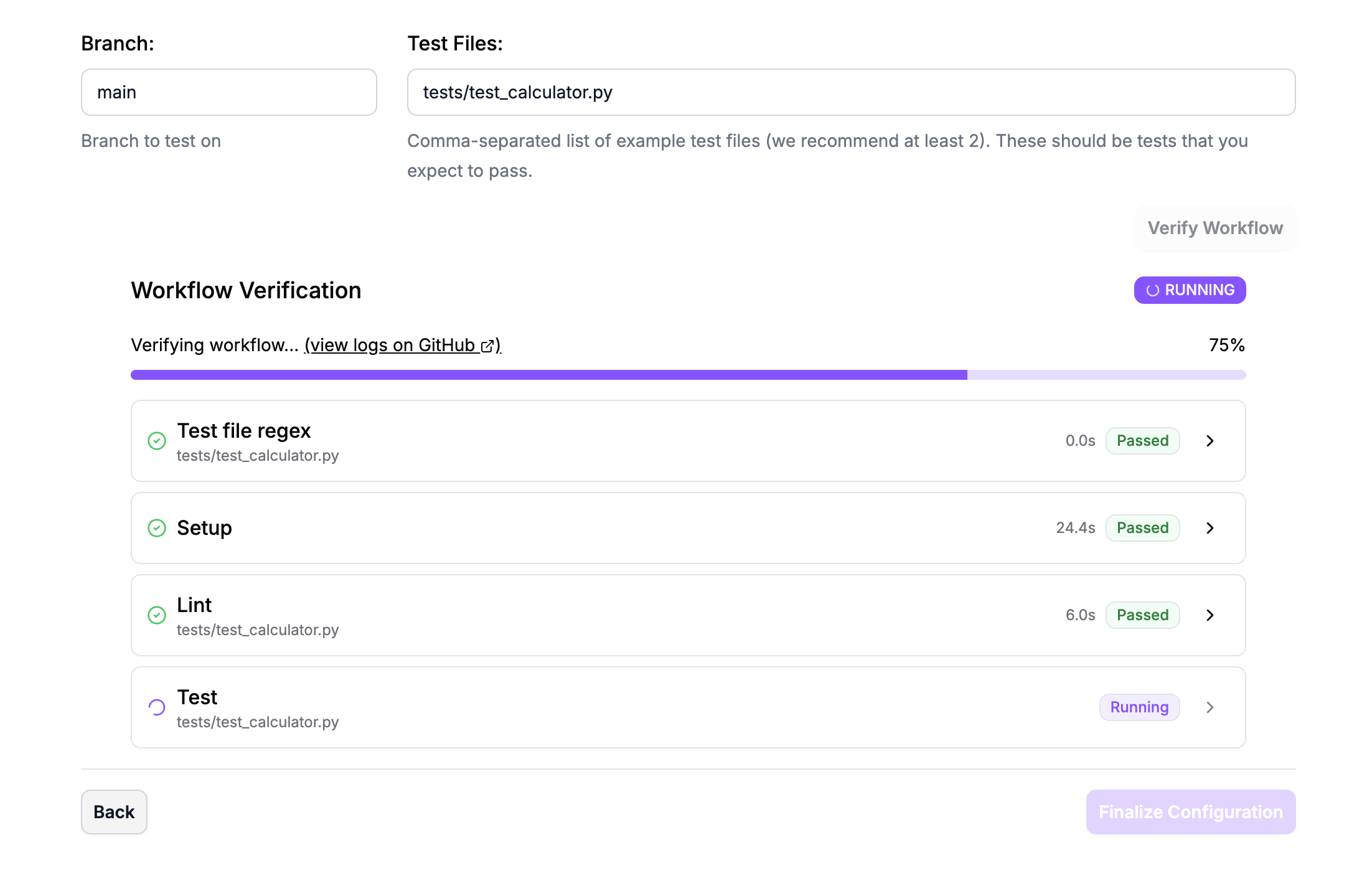


9
Complete test environment set-up
Click Finalize configuration once the Tusk GitHub workflow passes all steps.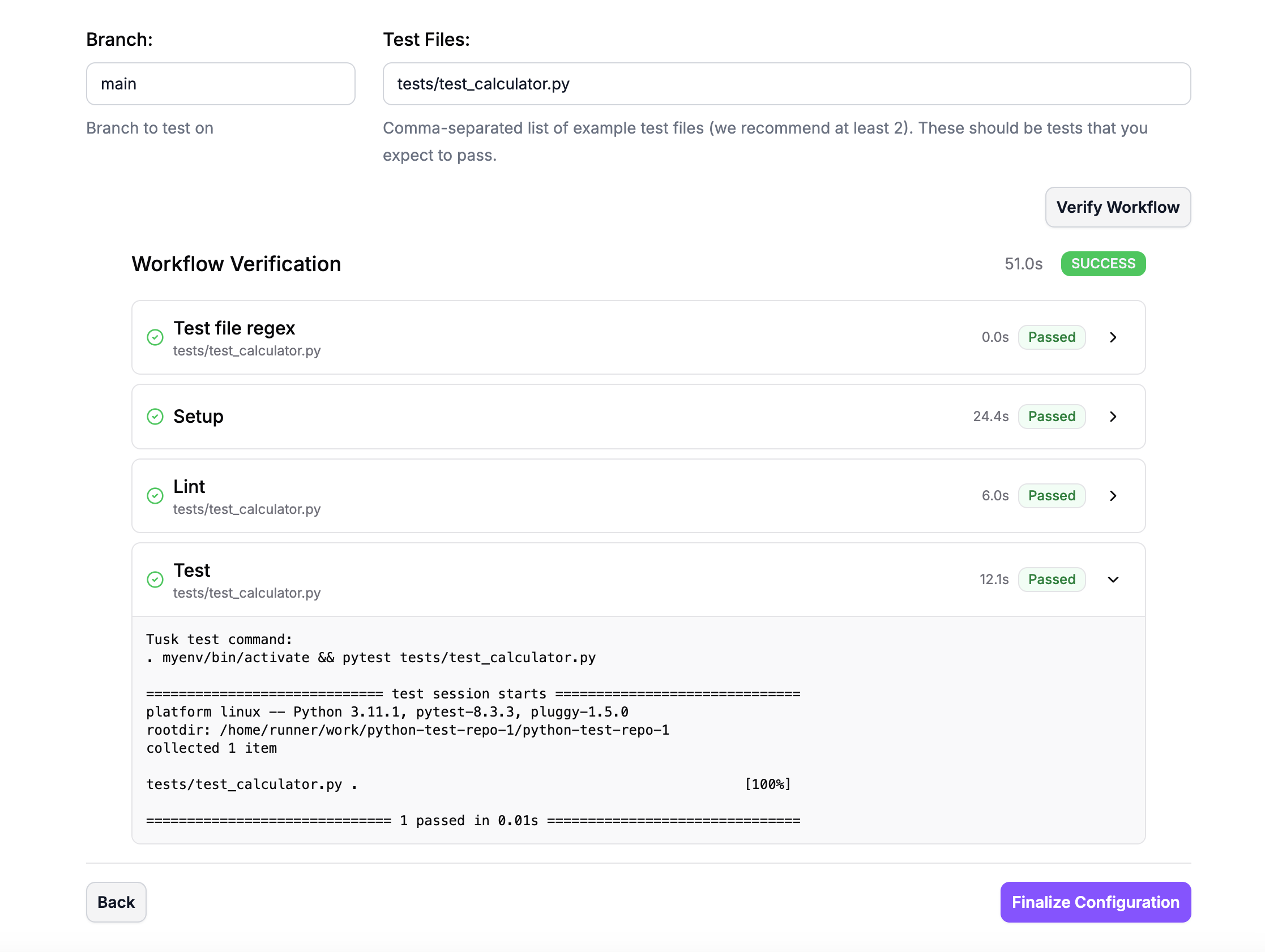
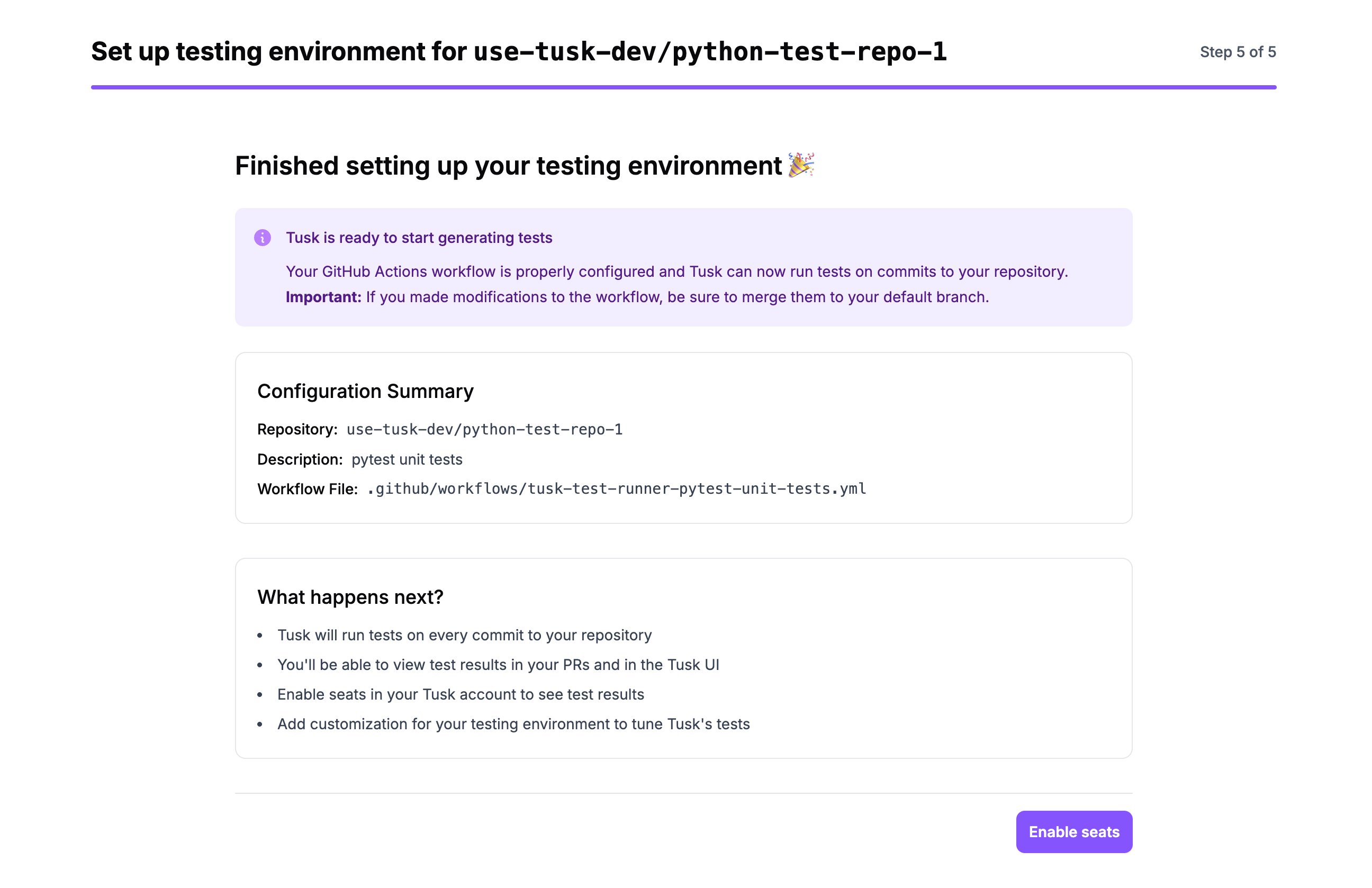


FAQs
What modifications do I need to make to the Tusk GitHub workflow template?
What modifications do I need to make to the Tusk GitHub workflow template?
You will be prompted to make modifications to the workflow template via comments in the workflow file itself. They include but are not limited to:
- Setup steps that are specific to your project
- Tusk API key (i.e., auth token)
- appDir relative to the root of the repo if the workflow is for a monorepo containing multiple services
- Test framework used (e.g., pytest, Jest)
- RegEx to match all test files in the services
- Script to run to lint the code
- Script to run to test the code
What is `appDir` and do I need to use one?
What is `appDir` and do I need to use one?
It refers to the directory containing your service code. If you have a monorepo containing multiple services, create a separate workflow for each service with a different (and non-overlapping) appDir. appDir should be relative to the root of the repo.Remove appDir if it doesn’t apply to your repo (i.e., it is a single-service repo).
Why do I need to merge the GitHub workflow into my default branch?
Why do I need to merge the GitHub workflow into my default branch?
GitHub doesn’t let you run workflows that don’t exist on the default branch. See GitHub docs for
workflow_dispatch:This event will only trigger a workflow run if the workflow file exists on the default branch.
My workflow verification failed. How do I resolve this?
My workflow verification failed. How do I resolve this?
- Create a new branch in your repo
- Make necessary changes to the workflow file to fix the issues
- Push your changes to the branch
- Return to the Tusk set-up wizard and retry verification (make sure to provide the correct branch above)
- Merge the branch into your default branch